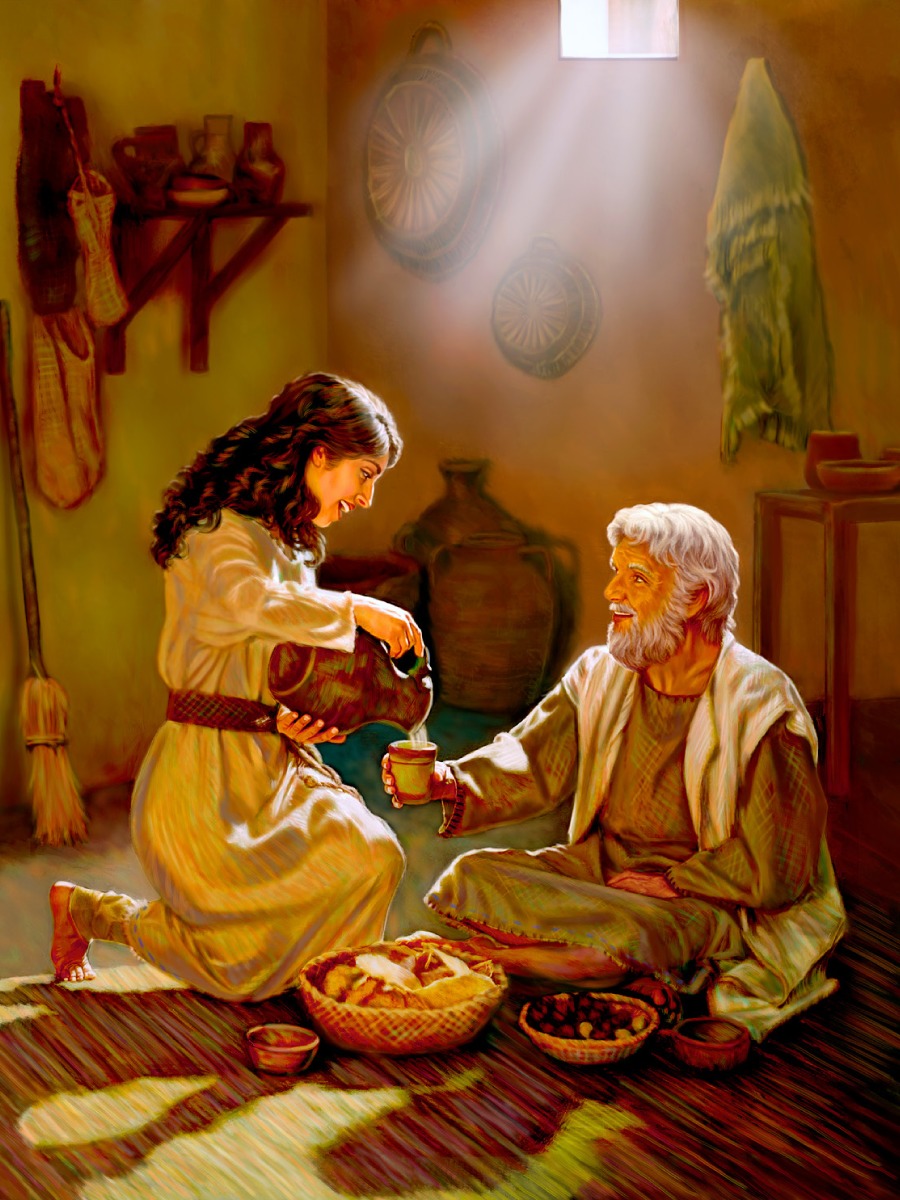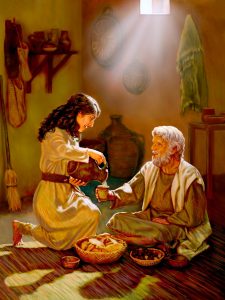How Touching the Royal Scepter Saved the Jews:
What happens when you get a nice Jewish girl like Esther to touch the King’s scepter, if you chap? We will find out below.
As a youngster, all I knew about Purim was that we need to stomp our feet, shoot our cap guns, and make noise at the sound of Homon (Haman). As well, we dressed in costume, delivered plates of cake and fruit to neighbors and waited -hoping the recipient would hand us at least a quarter as a tip. First learning the Purim story in elementary school and over the years, also reading it in English, the story read for itself. The history and facts were all clear; few had questions. Ober, as I got older began reading the heylige Gemora Migilah -an entire tractate dedicated to Purim, its laws, customs and historical accounts- the clarity was no longer there. Each and every midrash (exegesis) confused me further. That’s how I remain decades later. Allow me please to unburden myself and share some of my confusion.
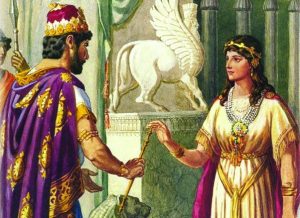 Let’s start here. The Oisvorfer was for decades under the impression that Esther was a very young and beautiful women, efsher still a virgin, one who did not require, nor ask for makeup or anointing oils to further beautify herself. Perhaps she was a teen, maybe very early 20’s. That she was selected to become the replacement Queen to Achashveyroish after he regretted -according to some- having his wife Vashti killed for not appearing in the nude in front of his guests. And taka, so says the Migilah (Esther 2:17):
Let’s start here. The Oisvorfer was for decades under the impression that Esther was a very young and beautiful women, efsher still a virgin, one who did not require, nor ask for makeup or anointing oils to further beautify herself. Perhaps she was a teen, maybe very early 20’s. That she was selected to become the replacement Queen to Achashveyroish after he regretted -according to some- having his wife Vashti killed for not appearing in the nude in front of his guests. And taka, so says the Migilah (Esther 2:17):
| 17. And the king loved Esther above all the women, and she obtained grace and favor in his sight more than all the virgins; so that he set the royal crown upon her head, and made her queen instead of Vashti. | יזוַיֶּֽאֱהַ֨ב הַמֶּ֤לֶךְ אֶת־אֶסְתֵּר֙ מִכָּל־הַנָּשִׁ֔ים וַתִּשָּׂא־חֵ֥ן וָחֶ֛סֶד לְפָנָ֖יו מִכָּל־הַבְּתוּל֑וֹת וַיָּ֤שֶׂם כֶּֽתֶר־מַלְכוּת֙ בְּרֹאשָׁ֔הּ וַיַּמְלִיכֶ֖הָ תַּ֥חַת וַשְׁתִּֽי: |
Let’s also read a few more pisukim, each dealing with the search for a replacement queen.
| 2. Then said the king’s servants that ministered unto him: ‘Let there be sought for the king young virgins fair to look on; | בוַיֹּֽאמְר֥וּ נַֽעֲרֵֽי־הַמֶּ֖לֶךְ מְשָֽׁרְתָ֑יו יְבַקְשׁ֥וּ לַמֶּ֛לֶךְ נְעָר֥וֹת בְּתוּל֖וֹת טוֹב֥וֹת מַרְאֶֽה: | |
| 3. and let the king appoint officers in all the provinces of his kingdom, that they may gather together all the fair young virgins unto Shushan the castle, to the house of the women, unto the custody of Hegai the king’s chamberlain, keeper of the women; and let their ointments be given them; | גוְיַפְקֵ֨ד הַמֶּ֣לֶךְ פְּקִידִים֘ בְּכָל־מְדִינ֣וֹת מַלְכוּתוֹ֒ וְיִקְבְּצ֣וּ אֶת־כָּל־נַֽעֲרָֽה־בְ֠תוּלָ֠ה טוֹבַ֨ת מַרְאֶ֜ה אֶל־שׁוּשַׁ֤ן הַבִּירָה֙ אֶל־בֵּ֣ית הַנָּשִׁ֔ים אֶל־יַ֥ד הֵגֶ֛א סְרִ֥יס הַמֶּ֖לֶךְ שֹׁמֵ֣ר הַנָּשִׁ֑ים וְנָת֖וֹן תַּמְרֻֽקֵיהֶֽן: | |
4. And let the maiden who pleases the king reign instead of Vashti.” And the matter pleased the king, and he did so. |
דוְהַֽנַּֽעֲרָ֗ה אֲשֶׁ֤ר תִּיטַב֙ בְּעֵינֵ֣י הַמֶּ֔לֶךְ תִּמְלֹ֖ךְ תַּ֣חַת וַשְׁתִּ֑י וַיִּיטַ֧ב הַדָּבָ֛ר בְּעֵינֵ֥י הַמֶּ֖לֶךְ וַיַּ֥עַשׂ כֵּֽן: |
| 7. And he brought up Hadassah, that is, Esther, his uncle’s daughter; for she had neither father nor mother, and the maiden was of beautiful form and fair to look on; and when her father and mother were dead, Mordechai took her for his own daughter. | זוַיְהִ֨י אֹמֵ֜ן אֶת־הֲדַסָּ֗ה הִ֤יא אֶסְתֵּר֙ בַּת־דֹּד֔וֹ כִּ֛י אֵ֥ין לָ֖הּ אָ֣ב וָאֵ֑ם וְהַנַּֽעֲרָ֤ה יְפַת־תֹּ֨אַר֙ וְטוֹבַ֣ת מַרְאֶ֔ה וּבְמ֤וֹת אָבִ֨יהָ֙ וְאִמָּ֔הּ לְקָחָ֧הּ מָרְדֳּכַ֛י ל֖וֹ לְבַֽת: | |
| 8. So it came to pass, when the king’s commandment and his decree was published, and when many maidens were gathered together unto Shushan the castle, to the custody of Hegai, that Esther was taken into the king’s house, to the custody of Hegai, keeper of the women. | חוַיְהִ֗י בְּהִשָּׁמַ֤ע דְּבַר־הַמֶּ֨לֶךְ֙ וְדָת֔וֹ וּֽבְהִקָּבֵ֞ץ נְעָר֥וֹת רַבּ֛וֹת אֶל־שׁוּשַׁ֥ן הַבִּירָ֖ה אֶל־יַ֣ד הֵגָ֑י וַתִּלָּקַ֤ח אֶסְתֵּר֙ אֶל־בֵּ֣ית הַמֶּ֔לֶךְ אֶל־יַ֥ד הֵגַ֖י שֹׁמֵ֥ר הַנָּשִֽׁים: | |
| 9. And the maiden pleased him, and she obtained kindness of him; and he speedily gave her ointments, with her portions, and the seven maidens, who were meet to be given her out of the king’s house; and he advanced her and her maidens to the best place in the house of the women. | טוַתִּיטַ֨ב הַנַּֽעֲרָ֣ה בְעֵינָיו֘ וַתִּשָּׂ֣א חֶ֣סֶד לְפָנָיו֒ וַ֠יְבַהֵ֠ל אֶת־תַּמְרוּקֶ֤יהָ וְאֶת־מָֽנוֹתֶ֨הָ֙ לָ֣תֶת לָ֔הּ וְאֵת֙ שֶׁ֣בַע הַנְּעָר֔וֹת הָֽרְאֻי֥וֹת לָֽתֶת־לָ֖הּ מִבֵּ֣ית הַמֶּ֑לֶךְ וַיְשַׁנֶּ֧הָ וְאֶת־נַֽעֲרוֹתֶ֛יהָ לְט֖וֹב בֵּ֥ית הַנָּשִֽׁים: |
| 13. When then the maiden came unto the king, whatsoever she desired was given her to go with her out of the house of the women unto the king’s house. | יגוּבָזֶ֕ה הַֽנַּֽעֲרָ֖ה בָּאָ֣ה אֶל־הַמֶּ֑לֶךְ אֵת֩ כָּל־אֲשֶׁ֨ר תֹּאמַ֜ר יִנָּ֤תֵֽן לָהּ֙ לָב֣וֹא עִמָּ֔הּ מִבֵּ֥ית הַנָּשִׁ֖ים עַד־בֵּ֥ית הַמֶּֽלֶךְ: |
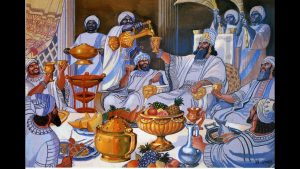 As perek beis (Chapter 2) begins, a contest is to be held to find a replacement queen. Young maidens, virginity seemingly a condition precedent (at this juncture), are to be gathered and placed into the harem, each awaiting their turn to be with (if you chap) the king in order for him to select a finalist, the replacement queen. Note the word ‘bisulo’, a word typically associated with virginity, is found in pisukim 2 and 3. The king wants a virgin! And who can blame him; it’s avada good to be the king. Notice as well that in those same pisukim (verses), and in others, when describing the women in the selection process, we find the word ‘na’a’ro,’ a term also associated with young maidens. Notice please posik 17 were we read that the king loved Esther more than all the other “women”. Women? What happened to the young maidens and virgins? And notice as well a few words later in the same posik where we read that Esther won the king’s favor more than all the other “girls.” And the questions -there are a number of them, halt kup (pay attention), are azoy:
As perek beis (Chapter 2) begins, a contest is to be held to find a replacement queen. Young maidens, virginity seemingly a condition precedent (at this juncture), are to be gathered and placed into the harem, each awaiting their turn to be with (if you chap) the king in order for him to select a finalist, the replacement queen. Note the word ‘bisulo’, a word typically associated with virginity, is found in pisukim 2 and 3. The king wants a virgin! And who can blame him; it’s avada good to be the king. Notice as well that in those same pisukim (verses), and in others, when describing the women in the selection process, we find the word ‘na’a’ro,’ a term also associated with young maidens. Notice please posik 17 were we read that the king loved Esther more than all the other “women”. Women? What happened to the young maidens and virgins? And notice as well a few words later in the same posik where we read that Esther won the king’s favor more than all the other “girls.” And the questions -there are a number of them, halt kup (pay attention), are azoy:
Was Esther a woman or a girl? Was she a “bisula” -a virgin- as was required of the entrants? Or, did the contest rules change? If only young maidens and virgins were entered, how was it that the king loved her more than all the other “women?” The Oisvorfer asks these questions only because he came across a medrish which states that Esther was either 75, 80, or 40 years old at the time of this selection process. She was how old? In fact, there is not one mention of her age anywhere in the entire Migilah. Moreover, there are varying opinions on Esther’s relationship with Mordechai. Was she his cousin, niece, or wife? All three opinions are offered. According to some, she was but his cousin and so says the Migilah, ober others tell us she was his niece. According to some, he wanted to marry her but did not. According to others, he did in fact marry her. According to one, Esther’s parents were both deceased -her father having died during her mom’s pregnancy, and her mother shortly after childbirth. Yikes! And Mordechai took her in and raised her. According to another, the RBSO Himself raised her. Some say Mordechai was already married -though his wife, if she existed, is not at all mentioned anywhere in the Migilah, and that his wife nursed a young orphaned Esther. According to one opinion, when a wet-nurse could not be found, Mordechai -miraculously of course- was able to nurse her himself. How is that possible? Ver Veyst! As an aside, there is at least one other reference in the heylige Gemora -not Purim related- of a gentleman being able to produce milk for nursing. If she was married to Mordechai, she was mistama not a virgin. That might explain the wording in posik 17 where we learn that the king loved Esther more than all the other “women.” As an aside, according to those who suggest that she was married to Mordechai, the king never found out. And if she was, we must also assume that the contest rules were changed to allow for married women to become entrants. If she was married to Mordechai, how could he allow her to become entangled with the king? Was this not verboten?
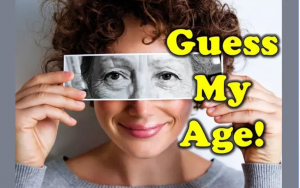 On the other hand, if she was not married to Mordechai, she could have qualified as a young maiden and a virgin. On the other hand, if she was at least 40 -according to some- and perhaps as old as 75 and even 80 -according to others- all found in the medrish quoting their own reliable sources, how could she compete with younger maidens and virgins? Could Esther have still been a virgin at 40, 75 and 80? Was she -generations before the movie with that title, the original 40 year-old virgin? Forgetting her virginal or married status, how could she compete in a beauty contest at her advanced age against younger maidens, mistama in their teens and or early 20’s? Moreover, let’s not forget that Vashti, the king’s first wife was but 18 years of age (according to every medrashic source the Oisvorfer has found). Why would the king be suddenly attracted to a 40 or 75 year old woman? Did his taste in women change? What’s pshat here? Was he still drunk from 180 day party he threw? Was he efsher attracted to Esther’s skin tone? Some say her skin had an esrog like green tone. Others tell us she was more teal colored. Another, that he had a golden, yellow tinge like the yolk of an egg.
On the other hand, if she was not married to Mordechai, she could have qualified as a young maiden and a virgin. On the other hand, if she was at least 40 -according to some- and perhaps as old as 75 and even 80 -according to others- all found in the medrish quoting their own reliable sources, how could she compete with younger maidens and virgins? Could Esther have still been a virgin at 40, 75 and 80? Was she -generations before the movie with that title, the original 40 year-old virgin? Forgetting her virginal or married status, how could she compete in a beauty contest at her advanced age against younger maidens, mistama in their teens and or early 20’s? Moreover, let’s not forget that Vashti, the king’s first wife was but 18 years of age (according to every medrashic source the Oisvorfer has found). Why would the king be suddenly attracted to a 40 or 75 year old woman? Did his taste in women change? What’s pshat here? Was he still drunk from 180 day party he threw? Was he efsher attracted to Esther’s skin tone? Some say her skin had an esrog like green tone. Others tell us she was more teal colored. Another, that he had a golden, yellow tinge like the yolk of an egg.
Wait: we are not done yet! We all agree that both Mordechai and Esther were observant Jews and avada they were. How could she as a married women also be married to the king? Oy vey! Not to worry because the medrish discusses each and every possibility and avada has answers to all these questions. Excellent lawyers they would have made. One tells us that Esther’s forced marriage -she was seemingly forced into the pageant and later into the bedroom- did not invalidate her marriage to Mordechai. Why not? Once taken, she was seemingly under duress and any relations they had, were considered to be of the sexual assault variety. It was all against her will. She was still permitted to have sex with her husband Mordechai. Ober listen to this mamish blow-me-down pshat: many believe that Esther had a demon (body-double) substitute. Not the demon sub you had in school, ober a real demon double. And it worked azoy: whenever the king summoned her to the boudoir for a royal act with his scepter, if you chap, the RBSO so arranged things that the king was having sex with her demon. Esther was not involved. Where was she? During those times, she would slip out the door and be home with her real cousin, uncle, or husband Mordechai. Gishmak!
 Ober doesn’t history record that the king and Esther had a baby together? It does: we are taught that King Darius was their child. Ober, if Esther was home and her demon was in bed with the king, how was this possible? Not to worry: one medrish tells us that Esther is still considered his mother. How is that possible? It’s medrish: everything is possible. One just needs to have a colorful imagination, and if properly credentialed, his medrish gets printed and is discussed as we are doing right now. Says the medrish: since the body-double the RBSO provided taka looked just like Esther -enough to fool the king- since the demon took on Esther’s image, it’s considered that she is the mother of the son sired by Achashveyroish and the body-double. Gishmak. Is the Oisvorfer making any of this up?! Not! 100% not! Each and every possibility and then some, is found in some medrish. According to those who believe that each and every medrish is emes -of course they are- nu, it’s a good thing we are commanded to drink on Purim until we are confused. If you don’t drink, read medrish: it will surely confuse you just as much. Once properly plied with spirits, or reading medrish with some spirit, everything becomes clear. Shoin.
Ober doesn’t history record that the king and Esther had a baby together? It does: we are taught that King Darius was their child. Ober, if Esther was home and her demon was in bed with the king, how was this possible? Not to worry: one medrish tells us that Esther is still considered his mother. How is that possible? It’s medrish: everything is possible. One just needs to have a colorful imagination, and if properly credentialed, his medrish gets printed and is discussed as we are doing right now. Says the medrish: since the body-double the RBSO provided taka looked just like Esther -enough to fool the king- since the demon took on Esther’s image, it’s considered that she is the mother of the son sired by Achashveyroish and the body-double. Gishmak. Is the Oisvorfer making any of this up?! Not! 100% not! Each and every possibility and then some, is found in some medrish. According to those who believe that each and every medrish is emes -of course they are- nu, it’s a good thing we are commanded to drink on Purim until we are confused. If you don’t drink, read medrish: it will surely confuse you just as much. Once properly plied with spirits, or reading medrish with some spirit, everything becomes clear. Shoin.
This coming Thursday, Yiddin all over the world will be marking and celebrating the great and joyous minor holiday of Purim. Purim was established by Mordechai & Esther in the year 357 B.C., following the great miracles which took place shortly after Esther reached out and touched the royal scepter. It did? Why did Esther need to reach out and touch the royal scepter? Nu, if you recall anything at all from the miraculous Purim story, and you should, given that it’s kimat everyone’s favorite story to read (with Migilas Rus coming in at a close second) it’s this part: Esther had won the pageant and was already anointed queen. Mordechai uses all his powers of persuasion to get Esther to go see the king. Why? Earlier, Homon had persuaded the king to send proclamations to each of his 127 provinces declaring that the Jews be wiped out. Mordechai chapped that only the beautiful Esther, the king’s wife, could get him to change his mind and implored upon her to go see the King. Seemingly, it was verboten to enter the King’s chamber unless summoned, and Esther told Mordechai that she had not been summoned to the chamber for over a month. Nu, a typical marriage! Even then, the king needed to extend his royal scepter before one could approach. In any event, after a three day fast (as an aside, to commemorate Esther’s sacrifice, we, in our times, fast one day, this year on Wednesday and refer to this day as Tannis Esther), Esther agreed to chance it and approach unsummoned.
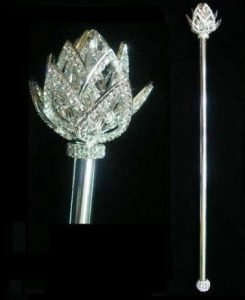 Esther entered the chamber and spied the king. Says the medrish: As Esther reached out for the scepter, the golden scepter extended towards her. Nu, after a month, avada this could be expected. The scepter itself was but two cubits long, ober it magically extended to 12 cubits. Some say the 12 cubits were representative of the 12 holy shevotim. What the shevotim, long dead, are doing in this storyline, ver veyst. Then it extended to 16 cubits and then to 24 cubits. And then to 60 cubits. Medrish has an explanation for each extension. OMG! And then? Holy scepter! As Esther reached out to touch the tip of the golden rod, it began to recede. She stepped forward to touch it and it receded further. Maybe she was 80! The closer she got to touching it, the more it receded. Ober with the help of the RBSO’s malach (angel), she was finally able to touch the tip of royal scepter. At that point, King Achashveyroish said “don’t be afraid.” A number of exegetes suggest that the RBSO Himself intervened and facilitated the entire extension and recession of the royal scepter. Raboyseyee, this is not the Oisvorfer’s pshat: this is all from medrish. Is it? The medrish talks about an extending and receding golden scepter? Who says all this?
Esther entered the chamber and spied the king. Says the medrish: As Esther reached out for the scepter, the golden scepter extended towards her. Nu, after a month, avada this could be expected. The scepter itself was but two cubits long, ober it magically extended to 12 cubits. Some say the 12 cubits were representative of the 12 holy shevotim. What the shevotim, long dead, are doing in this storyline, ver veyst. Then it extended to 16 cubits and then to 24 cubits. And then to 60 cubits. Medrish has an explanation for each extension. OMG! And then? Holy scepter! As Esther reached out to touch the tip of the golden rod, it began to recede. She stepped forward to touch it and it receded further. Maybe she was 80! The closer she got to touching it, the more it receded. Ober with the help of the RBSO’s malach (angel), she was finally able to touch the tip of royal scepter. At that point, King Achashveyroish said “don’t be afraid.” A number of exegetes suggest that the RBSO Himself intervened and facilitated the entire extension and recession of the royal scepter. Raboyseyee, this is not the Oisvorfer’s pshat: this is all from medrish. Is it? The medrish talks about an extending and receding golden scepter? Who says all this?
A medrish the Oisvorfer came across this year for the very first time in his life tells us that this was no ordinary scepter. And what was so special about it? To chap, which seemingly Esther did, all that took place with the scepter, the medrish relies on a variety of sources which include the heylige Gemora (Migilah 15B); the heylige Zoihar Chadash; Yalkut Shimoni; Midrash Tihilim 22; Ben Yehoyada; Midrash Talpios; R’ Elisha Galico; and maybe a few others. Together, they weave this fantastical myseh (story) and explain how the magical royal scepter worked, each providing his own ideas as to the different extensions of the scepter and the deeper meaning of each such extension. The longer the scepter, the deeper the meaning (of course).
The bottom line: the entire Purim story is shrouded in hidden miracles performed by the RBSO: who are we to argue?! Few would argue that the entire Purim story began to turn in favor of the Yiddin once Esther finally agreed to, and did in fact, touch the scepter. And to answer the question we led off with: good things happen when nice Jewish girls finally agree to touch the scepter.
A freylichin Purim to all Oisvorf readers, all over the world, in walled and unwalled places, if you chap, cities and countries.
The Heylige Oisvorfer Ruv
Yitz Grossman
